Why clean your washing machine?
If the idea of cleaning your washing machine sounds odd to you, let’s talk about some reasons it might be helpful:
- Some washers have the tendency to smell bad due to their design. HE washers tend to hold water in certain components, becoming a breeding ground for mold and mildew and causing unpleasant odors.
- Odors in a washing machine can eventually come off on clean clothing.
- Hard water causes lime buildup in components and pipes, causing things to run slower. Washing machines and pipes are more efficient when lime is removed.
- You may live in a humid climate. Constant moisture in the air prevents the washer from completely drying in between loads, causing stale odors and mildew.
- Often times soap and dirt splash up, leaving grime on parts of the agitator and wash bin that are above the water line.
Ours needed a good cleaning
My current washer is a normal (non-HE) top loader, but it definitely fits some of the criteria for needing a good cleaning. We have recently moved to a very humid climate and the washer is constantly damp strike #1 against having a nice-smelling washer. We live in a rental house in which previous renters allowed gunk to build up in parts of the machine strike #2. When we first moved in 7 months ago, I only cleaned the surface of the gross washing machine, leaving the inside for a day when I had more energy strike #3 for this poor appliance.
I’m somewhat embarrassed, but I’m showing pictures anyway. Lucky for you I’m not sending this out as a scratch and sniff article.
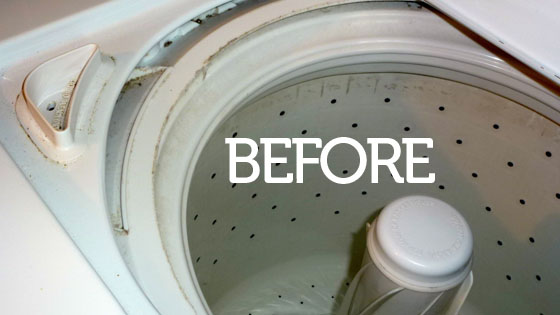
How to clean a washing machine naturally
I’ve seen other tutorials on cleaning top loaders, but many times the directions will recommend using bleach. Not only is bleach a toxic cleaner, but it is also bad for septic systems, which need a certain amount of bacteria present to break down matter.
The following instructions will allow you to kill mold, mildew, and keep odors at bay in your washer using only natural ingredients. This process is safe for septic tanks and safe for all washer components!
Two common household ingredients are needed for this project. White vinegar and baking soda to the rescue! The vinegar will disinfect, helping kill mold and mildew. The acidity of the vinegar will help dissolve soap residue in the wash tub and can also be helpful in dissolving lime deposits in pipes (if you have hard water). The baking soda cleans soap scum and deodorizes if you have SWS (stinky washer syndrome).
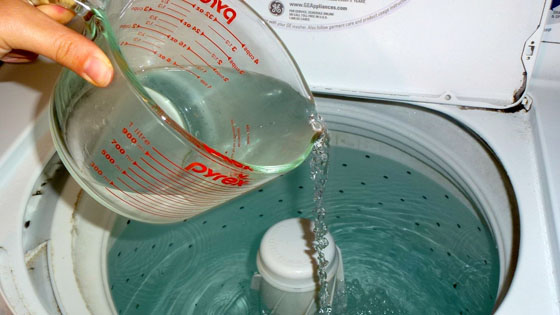
1. Set your washer to run on hot water with the largest load setting. Do not add clothes or detergent. Add 3-4 cups of white vinegar to the water and allow the machine to agitate for a minute to incorporate the vinegar.
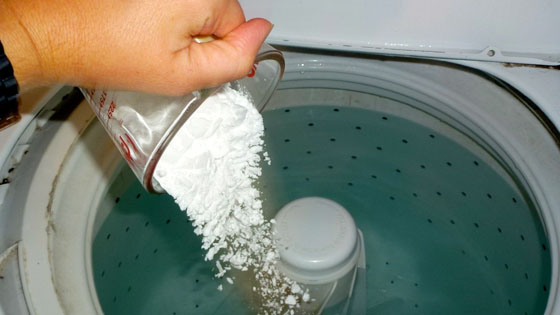
2. Add about ½ cup of baking soda. Allow the machine to run again to mix in the baking soda. Stop the washer at this point and allow the water to sit for 30 minutes to 1 hour.
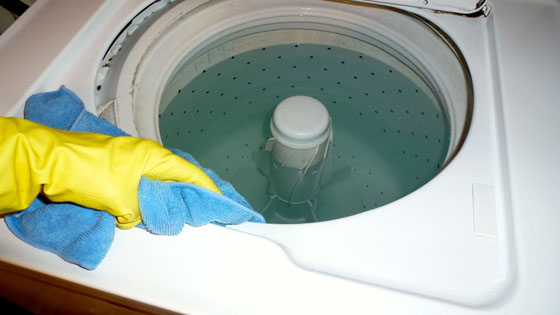
3. While the hot water, vinegar, and baking soda are penetrating the grime and odors, use a clean cloth dipped in the vinegar water to wipe down your washer. Give attention to the top of the washer, the knobs, the top of the wash bin, and any bleach or fabric softener dispensers. (I had to bust out an old toothbrush to detail all the grime that was residing in my washer! Ew!)

4. Allow the washing cycle to resume until the water begins draining. If your washer will allow it, turn the knob so the tub will drain while spinning, further cleaning out any gunk that has been loosened up and pushing the vinegar water through the holes in the wash bin. If your washer doesn’t allow this, start another hot wash cycle at this point and allow it to run through completely.
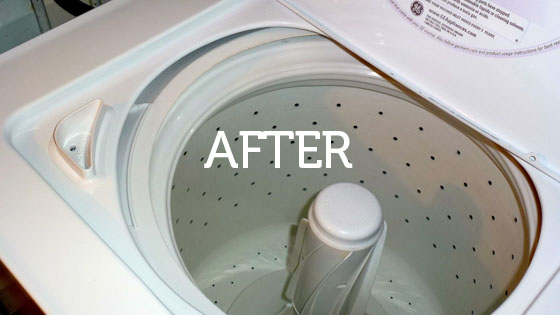
5. The scum around the top of the wash bin wiped off very easily with a sponge at this point. (Remember, the water doesn’t reach this part, so it may need a little extra attention.)
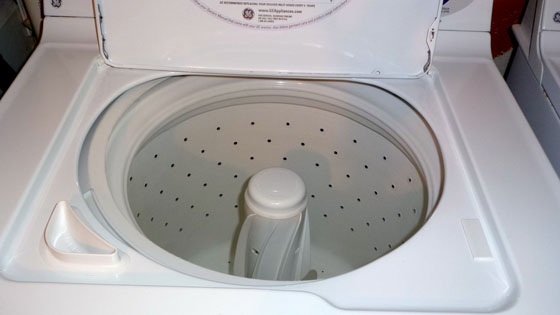
Your washing machine is now naturally clean!
I knew my washer smelled bad, but after cleaning it, my entire laundry room smells completely different! Apparently I was just accustomed to the stale odor.
If your top load washer is susceptible to getting mold, mildew, or odors, keep the lid open after each use to allow drying. Clean your washer using this method every few months or as needed.




 Tamarac, FL
Tamarac, FL 